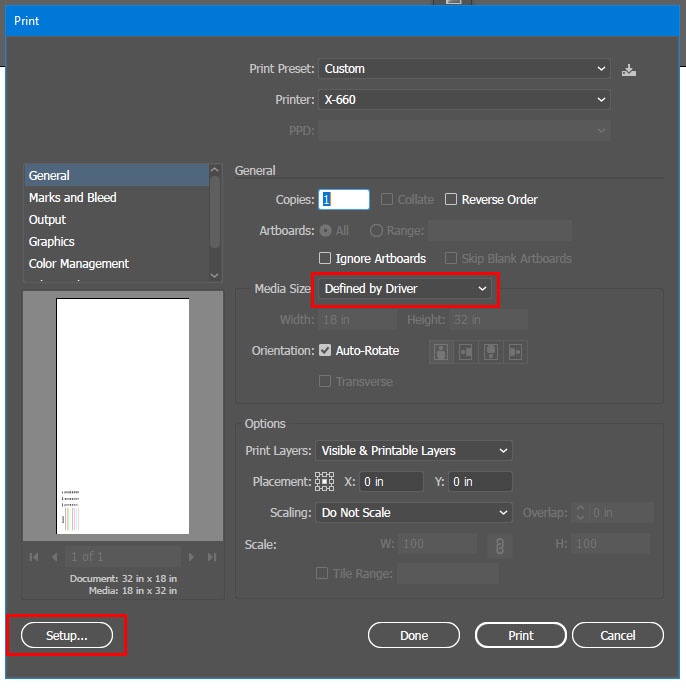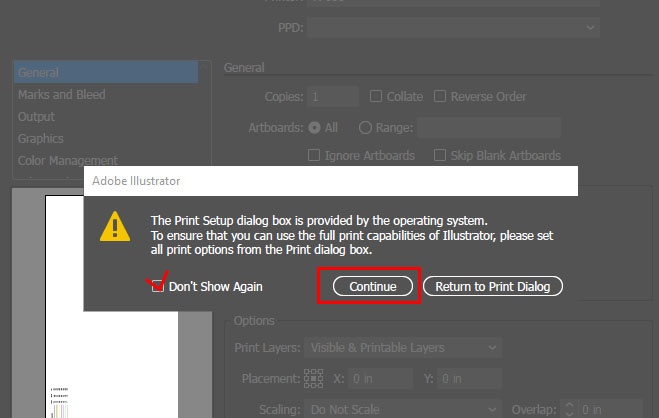The Laser Cutter will print from either AutoCAD or Adobe Illustrator, accommodating materials up to 18"x32".
Preparing AutoCAD Files
The pre-configured template file has labeled cut order layers and a no-print boundary representing the space of the laser cutter bed. It is located on the desktop and is attached below. Please use this template for all files.
Laser Cutter.ctb (Start Menu → Run → %USERPROFILE%\AppData\Roaming\Autodesk\AutoCAD 2019\R23.0\enu\Plotters\Plot Styles - this is the directory on the laser cutter computer where you copy the file.)
- Open your AutoCAD file and select all the geometries you wish to cut. Paste them into the template using ctrl+c and ctrl+v, not the CO copy command.
- Under properties (when an element is selected, right click and select "Properties"), ensure that all geometries are set to "By Layer" in the color, linetype, line weight, and transparency drop downs.
- If you imported your file from Illustrator, you will need to take extra steps (although these are helpful tips for AutoCAD generated files as well):
- Select all the geometry produced by Illustrator and enter command EXPLODE. Do this twice to ensure that the geometries ungroup (you should see a prompt reading "Cannot explode Spline" at the completion of the second explode)
- Enter command PEDIT, enter M for multiple, and select your geometries (if you have a lot of lines or they are complicated, it may be best to do this step in smaller groups). Enter Y to convert lines to polylines. Hit enter again (the default precision is fine). Enter J to join and hit enter twice to exit the command. If your file has complicated geometries, it is a good idea to run the PEDIT command sequence twice.
- Enter OVERKILL to remove duplicate lines (to prevent the laser cutter from cutting over lines twice or cutting slower). Or, from the menu select Express --> Modify --> Delete Duplicate
- Set the cut order/color assignments of the geometries. It is best to etch first, then cut geometries inside others, and then geometries that lie outside others can be cut (ex: in an elevation of a brick wall with a window, etch the bricks first, cut the window second, then cut out the whole wall). This prevents pieces from moving and cutting incorrectly The order is as follows:
- black (AutCAD index color #7) - this is a no-cut layer
- red (AutCAD index color #1)
- green (AutCAD index color #3)
- yellow (AutCAD index color #2)
- blue (AutCAD index color #5)
- magenta (AutCAD index color #6)
- cyan (AutCAD index color #4)
- orange (AutCAD index color #40)
- Your file is now ready to cut!
Preparing Illustrator Files
It is possible to laser-cut directly from Adobe Illustrator. The process is similar to AutoCAD, with the following notes:
- All vector lines and shapes (even if filled) must have a line weight of .001 in to be recognized by the laser cutter. Note: This does make the lines very difficult to see, so this is usually done as the last step before cutting.
- Line and fill colors must be assigned using RGB values and must conform to the following, or else they will not be recognized (cut order - #4 under Preparing AutoCAD files - also applies here):
Color Name | R | G | B |
|---|---|---|---|
| Black | 0 | 0 | 0 |
| Red | 255 | 0 | 0 |
| Green | 0 | 255 | 0 |
| Yellow | 255 | 255 | 0 |
| Blue | 0 | 0 | 255 |
| Magenta | 255 | 0 | 255 |
| Cyan | 0 | 255 | 255 |
| Orange | 255 | 102 | 0 |
When you first open the file, go to File>Document Color Mode>RGB. You can create swatches of the RGB colors above.
When defining the settings, leave the Media: Size as "Defined by Driver."
When your file is ready to cut, got to File>Print. To select cut/etch settings click the "Setup..." button (bottom left corner of dialog box).
At the warning screen, click "Continue."
In the white Print dialog box, select "Preferences." Within this dialog box you can create/edit/save your settings.
Click "OK" > "Print" > "Print", Then run the laser cutter.
Notes:
- If you want to cut dashed lines, you must use RAST as the pen mode in the Printing Preferences dialog.
- If you are laser cutting text, select the text, right click > Create Outlines. Then inverse the fill/outline and double check your stroke is set to .001
Preparing Topos/Maps
There are many ways to cut your contour map, here is one way we found to be efficient and may reduce mistakes.
- Set all your contour lines to non-plot.
- Beginning with the outermost/lowest layer, set the contour you want to cut to "green", and the contour above "red", alternating the contour lines between red and green.
- Set the outlined border to "green", trim it with the outermost layer.
- When you open the printing dialogue box, set the green layer to the "cut" setting, and the red layer to the "etch" setting. The red etched layer will give you a guide mark for when assembling the pieces and gluing the contour layers together later.
- Repeat steps 2-4 for the second layer.




